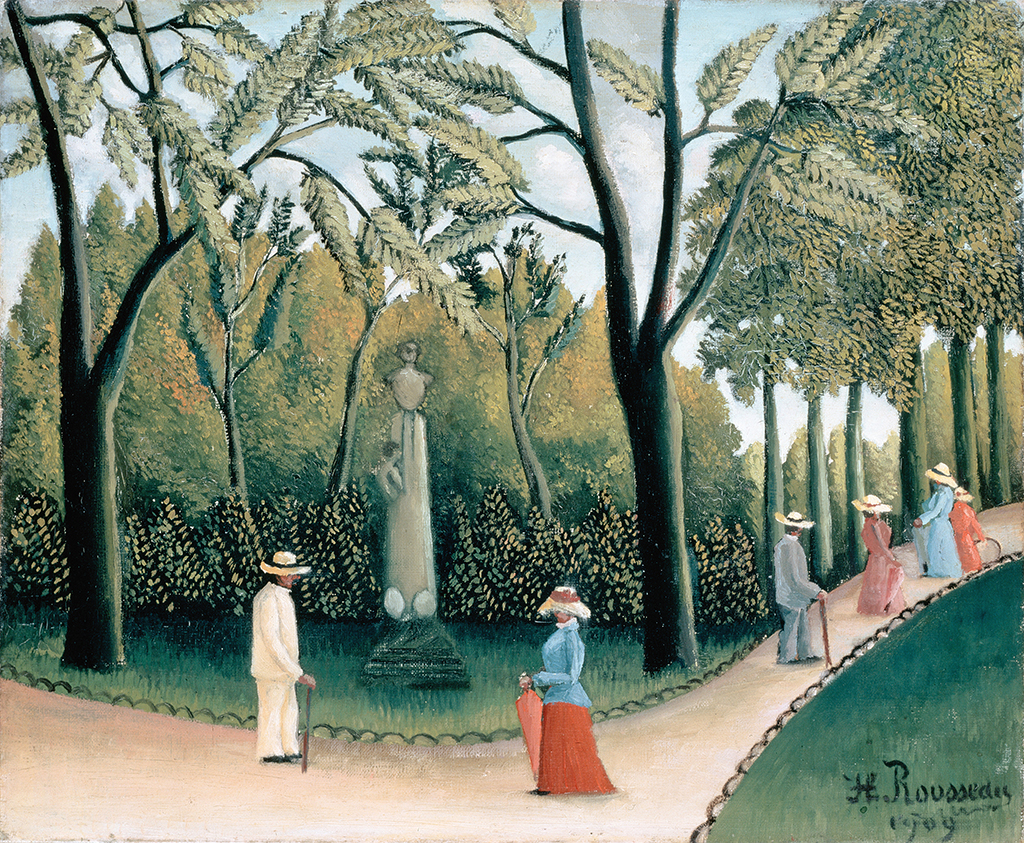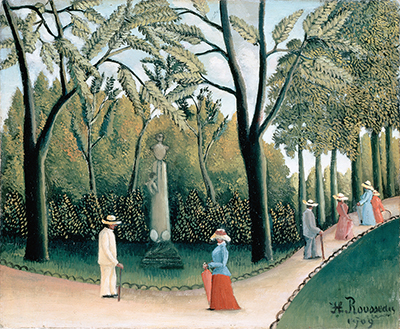Like many of the other works created by Henri Rousseau during his lifetime, the Post-impressionist style associated with Monument to Chopin in the Luxembourg Gardens tended to fall upon deaf ears when it was initially created in 1909.
Exhibiting the same Naive style that can be seen in the majority of his other paintings, it was not until after his death in 1910 that Rousseau would be given the credit that he ultimately deserved. Many of the mannerisms which tend to define this master can be viewed in Monument to Chopin in the Luxembourg Gardens; thus tending to highlight his decidedly unique style.
A Childlike Sense of Visual Simplicity
The viewer will be immediately drawn to the rather simplistic nature of this work. Unlike contemporaries such as Paul Gauguin and Vincent Van Gogh, Rousseau had no formal training as a painter. Many feel that this can be seen in the distinct lack of depth perceptive witnessed in the majority of his works. Indeed, the way the footpath awkwardly curves off to the right is somewhat clumsy in relation to the background elements as well as the pedestrians themselves. There is little texture involved nor do we observe a great deal of detail throughout the entire work. However, by no means do these observations detract from the appeal of the painting itself.
More Than Meets the Eye
This oil-on-canvas painting has had a profound influence on many famous avant-garde artists, and for good reason. Most critics now feel that there is an undeniable flavour of self-taught genius to be found. There is no doubt that Rousseau possessed an innate sense of visual balance. This can clearly be seen when we observe the pedestrians in the foreground compared to the dense shrubbery in the background. While it initially appears as if the statue of Chopin is awkward due to the fact that it has not been placed within the centre, we also observe that the winding footpath effectively offsets its position; providing a sense of equilibrium.
As textures and patterns are kept to a minimum, the attention of the viewer is immediately drawn to the figures as well as the rather hazy outline of the statue. Above all, Rousseau's use of a soft colour palette is ultimately pleasing to the eye. It should be mentioned that Monument to Chopin in the Luxembourg Gardens was created only a year before his death. Unlike many other famous artists of his day, Rousseau was still forced to work on a part-time basis after his retirement in 1893. It is therefore quite impressive that he still had the ability to create such a masterpiece so much later in his life.





